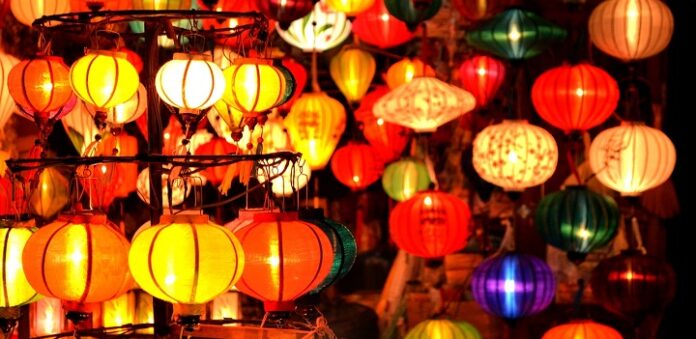Tourists wanting to visit the vineyards and wineries that have sprouted in Vietnam after the borders were opened in the late 1990s and early 2000s will already know that most of the wine production takes place in the central highlands of the country. What they might not know are other sites and attractions that are in or near the same area.
The central highlands are nestled along the coast between Hanoi in the north and Ho Chi Minh City in the south. Although a destination in its own right, the city and province of Da Lat is the known for agriculture, biotechnology and – of all things – nuclear physics. It is surrounded with pine forests and temperate climate make it different than any other region in Vietnam.
Hanoi to the north
Known as the ‘Paris of the Orient,’ Hanoi is the second largest city in Vietnam, coming in behind of Ho Chi Minh City in the South, but it is the nation’s capital. It is currently undergoing a rapid construction boom with many skyscrapers creating a completely new and modern skyline separate from and outside of the old city.
Hanoi has been the capital of Vietnam for nearly a thousand years and although architectural styles have changed over the centuries, some of the city’s ancient past is still visible. The Old Quarter has the layout and architecture of the city before French colonialism, World War II and the Vietnamese War took their toll. This relatively small neighborhood is known for local artisans and merchants as well as its authentic Vietnamese cuisine. Visiting the Old Quarter, while in Hanoi, should be on everyone’s list.
Also in the Old Quarter is the Temple of Literature (the original site of the oldest university in Vietnam) and the One Pillar Pagoda. For tourists interested in history, these two sites, as well as the archeological dig nearby of the Hanoi Citadel (found in 2004) are a definite must see.
Hanoi, as befits a national capital, has a great many shopping centers and restaurants. Everything from haute cuisine to street food can be found throughout the city; many times on the same block. While trying out the local cuisine, make sure you try Vang Dalat, the table wine of Vietnam made with grapes and mulberries.
Ho Chi Minh City to the south
You can still find many residents of Ho Chi Minh City that call their city Saigon. Tourists from the West – especially the United States – will find that even though there have been major cultural upheavals since the Vietnam War, the people are still friendly and welcoming strangers. Tourists, who are thought to be universally wealthy by the poorer inhabitants of Ho Chi Minh City, are especially welcome.
Ho Chi Minh City is the largest city in Vietnam and has a tropical climate. It still reflects the charm of its French colonial period through architecture and layout. After the takeover of Saigon in the 1970s by the Communists, new architecture was added. Unfortunately, since this was akin to the Soviet concrete block style, it added little to the charm. Since the early 2000s, however, a boom in building – similar to the one in Hanoi – has added a number of skyscrapers to the skyline of the city. This has the pleasant effect of taking attention away from the drab concrete structures and making the city appear more modern.
Some tourists go from Hanoi to Sapa, it’s a short trip and it’s definitely worth visiting. Other tourists visit Ho Chi Minh City which is filled with museums, theaters and musical venues. Fine restaurants coexist with inexpensive street vendors and the city itself is vibrant and alive.
Come for the tours, stay for the wine
There are many small vineyards and wineries scattered throughout the central highlands of Vietnam. Vang Dalat is the largest – by an order of magnitude – and makes Vietnam’s famous Vang Dalat table wine, but it is not the only one and many of the smaller wineries are much easier to tour if you are trekking on your own.
By far the best way to visit Vietnam’s wineries, however, is as part of a tour. Many Vietnam tours have winery tours included or easily added. Others give their guests enough flexibility to slip off for a day – or a week – to visit some of the vineyards and wineries with a group or guide to make the tourism simpler and less of a bureaucratic exercise. Going with an established tour company makes it easier and more enjoyable for the most part. Here, you will be introduced to some of the most beautiful wines in the world, making you an even more experience connoisseur. That wine subscription that you’ve been craving can become a reality once you know the kind of wines you prefer, as then you can create your own crate that you’ll really enjoy. The more countries that the wine is sourced from, the better.
In forty years, Vietnam has gone from a war-torn closed country that had no contact with the West to a vibrant economic powerhouse that has embraced Western culture and taste, and the last 20 of those years have been a boon to the tourism industry of the country. The country is still experiencing growing pains and tourists need to remember that Asian cultures revere patience much more than Western cultures do.
Patience can be a huge help when dealing with government or industrial officials. The way we do things is not the way they are accustomed to. Our culture has had many years of spreading itself across the globe; many of the Asian countries have been much more insular over that time.

